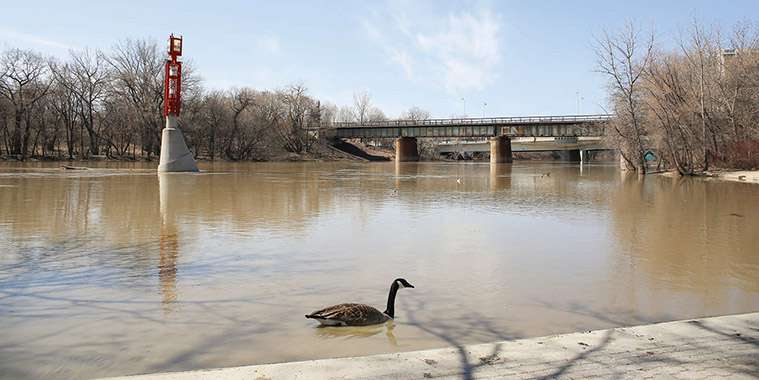Heavy rainfall can lead to flooding, especially in the spring, when the ground is still frozen or already saturated from previous storms. Rapid melting of snow and ice jams can also lead to floods. Every year, floods affect hundreds of thousands of Canadians and cause millions of dollars in damages.
Be prepared
Fortunately, there are many steps you can take to protect your property from floods. Here are some of the most important ones:
1. Know your risk The first step in being prepared is knowing the risks specific to where you live. You can learn about some past major flood events in Canada on the Public Safety Canada website. Also, most provinces and territories have region-specific information online.
2. Talk to your insurance broker Peace of mind comes from knowing your home and belongings are protected in case a flood does happen. Make sure your policy has you covered from flooding and water damage.
3. Try your hand at DIY fixes You don’t need to be super handy to update your home with some flood-prevention measures. For example, you can put sealant around basement windows and the base of ground-level doors, or install flood shields or barriers on them. Ensure that your property is graded so that water runs away from your basement walls.
4. Do some basic maintenance Simple upkeep around your home, especially the exterior, can have a big impact when heavy rain strikes. Check that your roof and eavestroughs are draining properly and that no basement floor drains are blocked or covered up. Make sure your sump pump is working and install a battery-operated backup.
5. Get help from a pro If you’ve experienced major flooding in the past, or have significant structural problems, like cracks in your foundation, you might need help from professionals, like engineers, plumbers or masons. A starting point is working with an independent assessor who can help you to figure out the most affordable solutions.
These days, however, it’s not just a matter of keeping your property safe, but yourself as well.
In response to the current COVID-19 pandemic, the Manitoba government recognizes the importance of social distancing to keep workers and others they come into contact with safe. As a result, the following precautions are being incorporated into sandbag and water-filled barrier procedures:
• Social distancing with a minimum of six feet or two meters;
• Availability of adequate hand washing and washroom facilities;
• Regular disinfecting of surfaces;
• Alteration to work methods;
• Use of appropriate personal protective equipment;
• Ensuring workers who are sick self-isolate for 14 days;
• Preparing for a number of workers to be sick at the same time.
In addition, the Manitoba government will assign specific duties for regular cleaning of common surfaces, tools, and facilities. A coordinated approach with the construction industry, suppliers and consultants is underway to ensure the safety of everyone involved in response efforts.
The work methods for the construction of protection have been revised to allow the work to continue safely. These are described in detail at www.gov.mb.ca/emo/pdfs/adaptations-to-high-water-response-activity, or for further information contact your municipal office or Emergency Measures Organization (EMO) at emo@gov.mb.ca
Plan ahead
If the worst happens, how would you react in a crisis? Many of us don’t give it much thought. That’s why it’s important to plan ahead, so you’re ready if a flood or severe weather event happens in your community. These tips can help you to be prepared:
1. Make a plan What if you’re not all together if an event occurs? Keep emergency phone numbers handy, plan where to meet and how to contact one another. Discuss what you would do in different situations. Include a plan for special health needs, your pets, and an evacuation order. Know how to shut off your utilities (hydro, gas, water).
2. Prepare an emergency supplies kit In an emergency, you may need to get by without electricity or tap water. Put together a well-stocked emergency kit that will keep everyone in your home self-sufficient for 72 hours. Keep your kit in a spot where your family can easily access and use it — even in the dark. At minimum, your kit should contain:
• Flashlight (extra batteries) and/or candles
• Hand-crank or battery-powered radio
• Mobile phone (battery pack and car charger)
• First Aid kit and prescription medication
• Hand-sanitizer and personal care items
• Multi-tool or small tool kit
• Bottled water (2 litres per person, per day)
• Canned or dried food, and pet food, if needed
• Manual can opener
• Extra blankets or sleeping bags
• Whistle
• Disposable plates and utensils, trash bags
• Games and crafts to keep your family occupied.
For more information, refer to the Emergency Preparedness Guide at hydro.mb.ca
— NewsCanada.com



